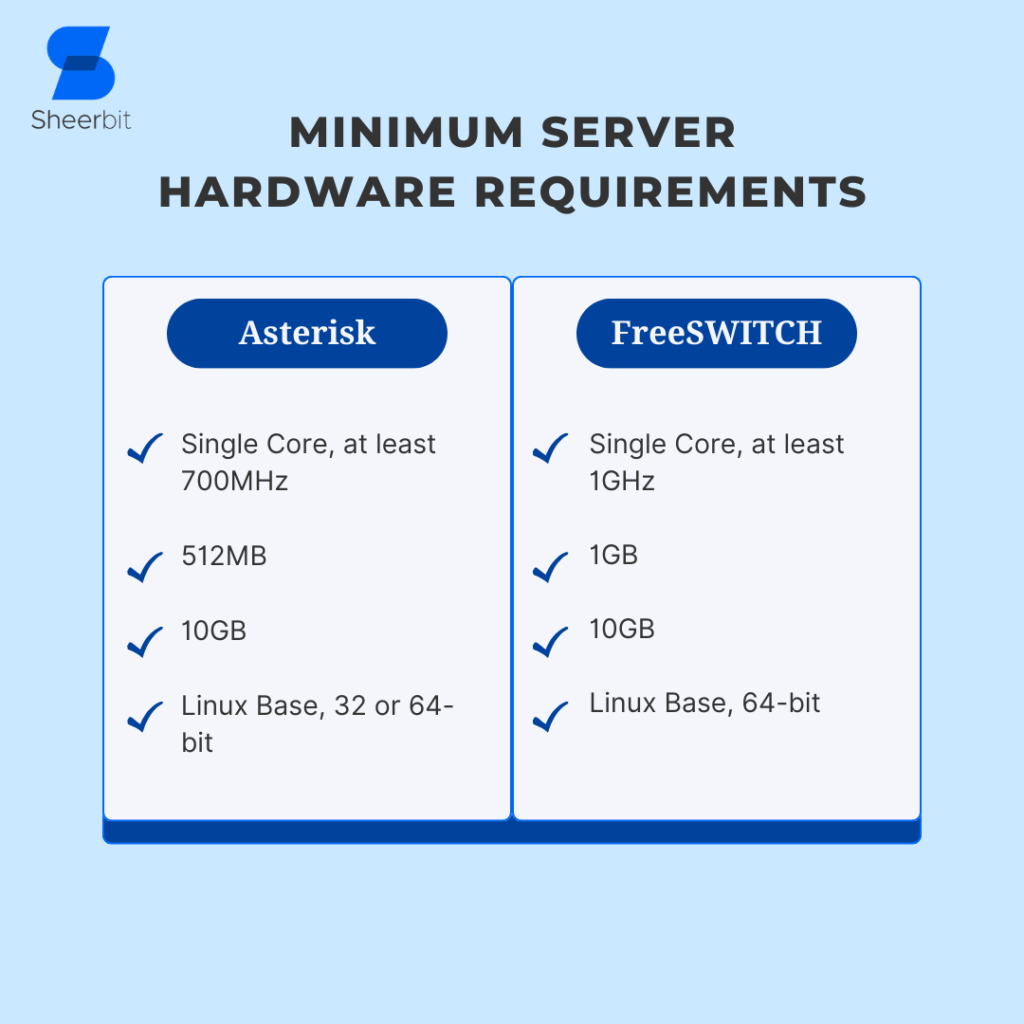The kind of PBX (Private Branch Exchange) system you choose can significantly impact telecommunications, where every dial tone counts. Communication technology advancements have created two significant competitors: FreeSWITCH vs Asterisk. Both are pretty powerful, but FreeSWITCH is the clear winner over Asterisk regarding performance, scalability, and adaptability.
Understanding the Dynamics
Asterisk has long been praised as the preferred option for FreeSWITCH vs Asterisk systems. Thanks to its rich feature set and open-source nature, it has a devoted user following. However, Asterisk’s limits become evident when communication requirements are more complicated. On the other hand, FreeSWITCH presents a novel viewpoint thanks to its sturdy functioning and modular design.
Why Consider FreeSWITCH over Asterisk?
Although Asterisk has advantages, there are several strong arguments in favor of switching to FreeSWITCH. Because of its rich feature set and modular architecture, it may be more flexible and scalable and can facilitate the development of creative communication solutions.

Pros and Cons of FreeSWITCH vs Asterisk
FreeSWITCH:
Pros:
- Using modular architecture to provide flexibility
- Better performance and scalability
- Support for cutting-edge features, including real-time video processing and WebRTC
- Smooth interaction with outside programs
Cons:
- A learning curve for people who are not familiar with its design
Asterisk:
Pros:
- A sizable user base and established reputation
- Broad feature set
- Well-written guides and resources
Cons:
- Scalability and customization are limited by monolithic architecture
- Under high loads, performance might deteriorate
The Migration Process: Step-by-Step Guide
The move from Asterisk to FreeSWITCH may initially appear complicated, but it may go smoothly and seamlessly with the proper preparation and implementation. To assist you in navigating the migration process, below is a comprehensive guide:
Step 1: Assessment and Planning
It is crucial to evaluate your present Asterisk configuration and specify your goals for the FreeSWITCH migration before beginning the procedure. Among them are
- A list of all the hardware and software components you currently have
- An analysis of the number of calls, traffic trends, and system performance you now experience
- identifying the precise capabilities and functions that FreeSWITCH needs to provide
- identifying any unique setups or connections that require duplication
Step 2: Designing the FreeSWITCH Infrastructure
Create a FreeSWITCH infrastructure that satisfies your needs and supports your company goals based on the evaluation. Among them are:
- Choosing the right software and hardware components for your FreeSWITCH installation
- Creating the network architecture with security, scalability, and performance in mind
- Making disaster recovery and high availability plans in advance to reduce downtime throughout the relocation process
Step 3: Installing and Configuring FreeSWITCH
After the design is complete, install and set up FreeSWITCH on the hardware platform of your choice. This includes:
- Setting up the FreeSWITCH program on your servers
- Setting up the fundamental parameters, including call plans, SIP trunks, and network interfaces
- Establishing user accounts, extensions, and permissions to your needs
- Checking if FreeSWITCH is installed and configured correctly by testing its essential functions
Step 4: Data Migration
Proceed to transfer your Asterisk data to FreeSWITCH, encompassing:
- Transferring user account data, such as extensions, passwords, and usernames
- Importing current dial plans, including IVRs, call routing rules, and inbound and outgoing routes
- Voicemail messages, phone records, and other historical data are being migrated as needed.
- Making ensuring the transferred data is accurate and complete by confirming its integrity
Step 5: Testing and Validation
Please ensure the new FreeSWITCH system is thoroughly tested and validated before deploying it.
- Test call routing, IVR, voicemail, conferencing, and other crucial functions from beginning to end.
- Do load testing to replicate real-world call volumes and confirm system performance under varied circumstances.
- Verify compatibility with services and apps from other parties, such as call recording apps or CRM systems.
- Resolve any problems or inconsistencies during testing and make the required corrections.
Step 6: Training and Documentation
Teach your employees how to use the new FreeSWITCH system efficiently:
- Conduct training sessions covering FreeSWITCH’s features, functions, and administrative responsibilities.
- To provide reference materials for continuing support and maintenance, provide documentation and user manuals.
- Provide interactive workshops or internet resources to supplement instruction and resolve queries or issues.
Step 7: Go Live and Post-Migration Support
Lastly, arrange for the switchover to the new FreeSWITCH system and continue to offer assistance:
- Work with stakeholders to coordinate the switchover to minimize any impact on company operations.
- Throughout the first post-migration phase, monitor the system carefully and take quick action to fix any problems.
- To guarantee a seamless transition and increase customer happiness, provide ongoing support and troubleshooting help.
If you’re considering switching from Asterisk to FreeSWITCH, you can do it quickly and without problems. Our team of professionals will walk you through every step to guarantee a smooth transition that doesn’t interfere with your business operations.
How can We Assist You in Converting from Asterisk to FreeSWITCH?
We are aware of the anxiety associated with switching to a new PBX system. As a result, we provide thorough help throughout the relocation process. We’ll be there for you every step, from evaluating your setup to tweaking FreeSWITCH to satisfy your unique needs.
The Path Forward: Embracing FreeSWITCH
In conclusion, FreeSWITCH is the subsequent development of open-source PBX systems, even though Asterisk has pioneered in this area. Due to its rich feature set, scalability, and modular design, FreeSWITCH is the best replacement for Asterisk. FreeSWITCH is the solution for every company needing high-performance telecom solutions, whether a significant organization or a small business seeking flexibility. Make the transition now to utilize FreeSWITCH for your communication infrastructure to the fullest extent possible.
Ready to experience FreeSWITCH’s unparalleled capabilities? Contact us now to learn more about how FreeSWITCH can transform your communication ecology. With FreeSWITCH, you can modernize your PBX system and remain on top of trends. Use FreeSWITCH to embrace the telecoms of the future. This is where your communication adventure begins.





